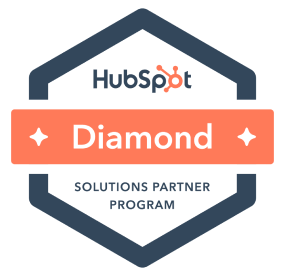Listen to the blog
Off to Inbound 2015. What we've learned.
As anyone in content marketing knows InBound 2015 is here again. This year my partner Jani Aaltonen and I are heading to Boston again for HubSpot’s annual conference and since it's our second year in a row we know what to expect. A great, fruitful visit. We're privileged to be able give a presentation at the event focusing on our past year and how we've successfully transformed ourselves from an outbound to an inbound agency.
Why take to the stage? Results. Sales Communications has tripled its revenue last year and this year it's set to double it. Even more importantly, we've reached good levels in customer satisfaction and our company is experiencing positive momentum.
One of the major factors enabling our efficiency is an understanding of when our prospecting and account management works and when it will most likely fail. Certain challenges stand out more than others...
5 Key Challenges When Selling Automation Software

HubSpot resellers probably face many of the same challenges everywhere. For those of you just now beginning your trec as a partner agency here are our favourite top 5 obstacles to sales and growing profitable accounts.
- Middle management doesn’t have the authority.
- Make sure you have top management commitment from the start, in the sales process and, especially, monitoring and following execution. Chances are that an inbound approach won’t happen unless the CEO understands, that investing in marketing automation is not like acquiring traditional software. It’s a shift in e.g. mindset, focus and metrics - and that’s huge.
- Most companies are limited in their ability to change.
- Clients utilising digital at very basic levels are not suddenly going to take huge leaps forward. Usually conservative, introverted companies have managed to employ like-minded people who will be averse to content marketing, getting out there etc. Your prospect may understand that buying has changed so help them forward one step at a time - don’t try to sell them more than they can devour. They’ll thank you later for understanding evolution and not trying to push revolution.
- The software is there, but the client isn’t using it.
- So you've sold the software, but initially your client returns to business as usual. Sales reps start picking up the phones again and specialists return to their underground test labs. The Game Plan erodes, content is not being created, blogs are ad hoc…
- Avoiding such a phenomenon can be difficult, but making sure systematic processes are in place to measure and follow metrics, manage resources and project timetables - as well as understanding that inbound marketing is not a campaign - can make a difference in how well you manage the account lifecycle and where it's headed.
- Content marketing needs cash.
- Let’s be honest, content marketing requires lots of content from top to funnel bottom and that can be expensive. Time consuming.
- When we started selling HubSpot, we were hesitant to convey to clients the full cost of what it all entails. No longer. You see, they're selling and marketing as we speak anyway - so the question is not how they should cough up lots of extra liquidity to enable inbound, but rather how they intend to shift resources from old sales and marketing to digitally driven sales and marketing - or eventually risk losing market share.
- Sales doesn’t want to see marketing meddling in its affairs.
- An understandable reaction. But. HubSpot talks about Smarketing and refers to the fact, that an inbound process without sales and marketing aligment is a futile endeavour. If you’re only talking to marketing chances are you can make the sale, but your client won’t be able to get the most out of the investment unless the Sales Director is committed to changes in the value chain.
- Help get sales onboard right away and a do a great service to everyone, especially marketing. This goes back to point 1 and the importance of the CEO. If he or she is faced with a Sales Director not willing to change maybe that position should be opened up to new entrants.
Selling A New Marketing & Sales Lifestyle
Change management? You bet. We're not selling a tool, a machine - we're sort of selling a new lifestyle for sales and marketing. To help take into account the challenges I have discussed we've to set up very clear auditing practices that help us see where our prospects stand in relation to content marketing, technology and digitalization. It helps us concentrate on real potential rather than waste resources on opportunities that simply won’t happen - or will, but will prematurely fade away.
I also like to think we're saving our prospects' time too by being honest and - quite frankly - demanding clients take the appropriate steps needed on the journey towards an inbound-driven marketing and sales machine. Using digital to drive sales in IoT is an inevitable development - so understanding the obstacles involved in selling inbound and marketing automation can go a long way in delivering the results every VAR wants from day one.
At Sales Communications we're striving to build Inbound in the Nordics - both through our own work as well as via our client successes. We're also keen to help new players join the market and strengthen the category both locally and internationally. Considering becoming a HubSpot partner or taking the first steps as a content market agency? Let's talk and see how we can support you!


